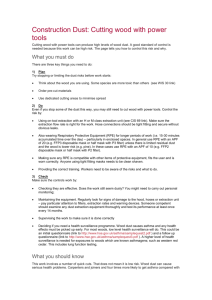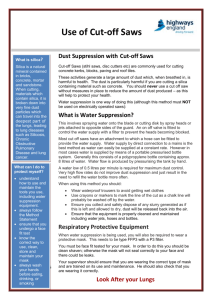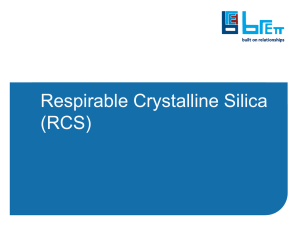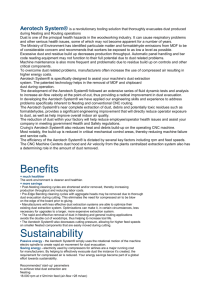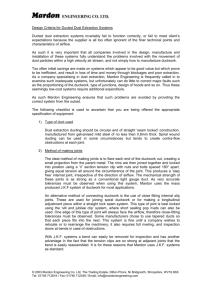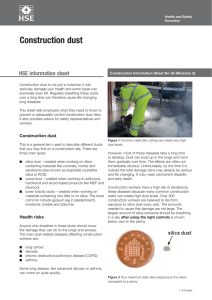File
advertisement
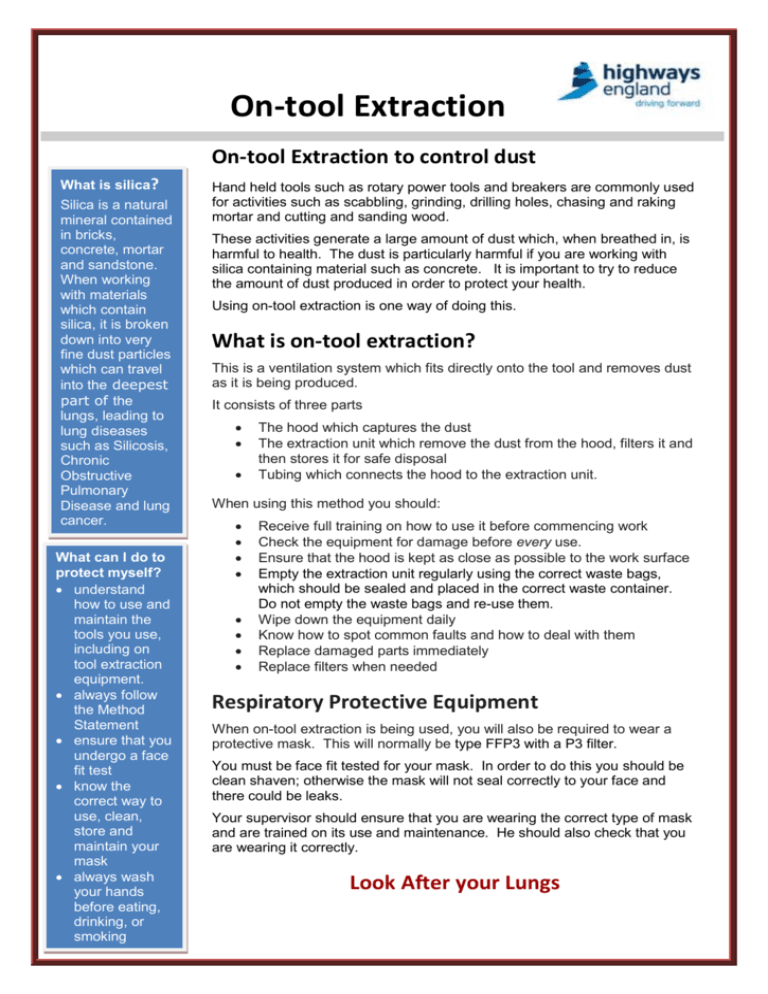
On-tool Extraction On-tool Extraction to control dust What is silica? Silica is a natural mineral contained in bricks, concrete, mortar and sandstone. When working with materials which contain silica, it is broken down into very fine dust particles which can travel into the deepest part of the lungs, leading to lung diseases such as Silicosis, Chronic Obstructive Pulmonary Disease and lung cancer. What can I do to protect myself? understand how to use and maintain the tools you use, including on tool extraction equipment. always follow the Method Statement ensure that you undergo a face fit test know the correct way to use, clean, store and maintain your What qons mask always wash your hands before eating, drinking, or smoking Hand held tools such as rotary power tools and breakers are commonly used for activities such as scabbling, grinding, drilling holes, chasing and raking mortar and cutting and sanding wood. These activities generate a large amount of dust which, when breathed in, is harmful to health. The dust is particularly harmful if you are working with silica containing material such as concrete. It is important to try to reduce the amount of dust produced in order to protect your health. Using on-tool extraction is one way of doing this. What is on-tool extraction? This is a ventilation system which fits directly onto the tool and removes dust as it is being produced. It consists of three parts The hood which captures the dust The extraction unit which remove the dust from the hood, filters it and then stores it for safe disposal Tubing which connects the hood to the extraction unit. When using this method you should: Receive full training on how to use it before commencing work Check the equipment for damage before every use. Ensure that the hood is kept as close as possible to the work surface Empty the extraction unit regularly using the correct waste bags, which should be sealed and placed in the correct waste container. Do not empty the waste bags and re-use them. Wipe down the equipment daily Know how to spot common faults and how to deal with them Replace damaged parts immediately Replace filters when needed Respiratory Protective Equipment When on-tool extraction is being used, you will also be required to wear a protective mask. This will normally be type FFP3 with a P3 filter. You must be face fit tested for your mask. In order to do this you should be clean shaven; otherwise the mask will not seal correctly to your face and there could be leaks. Tool Box Talk Guidance Your supervisor should ensure that you are wearing the correct type of mask and are trained on its use and maintenance. He should also check that you are wearing it correctly. Look After your Lungs

